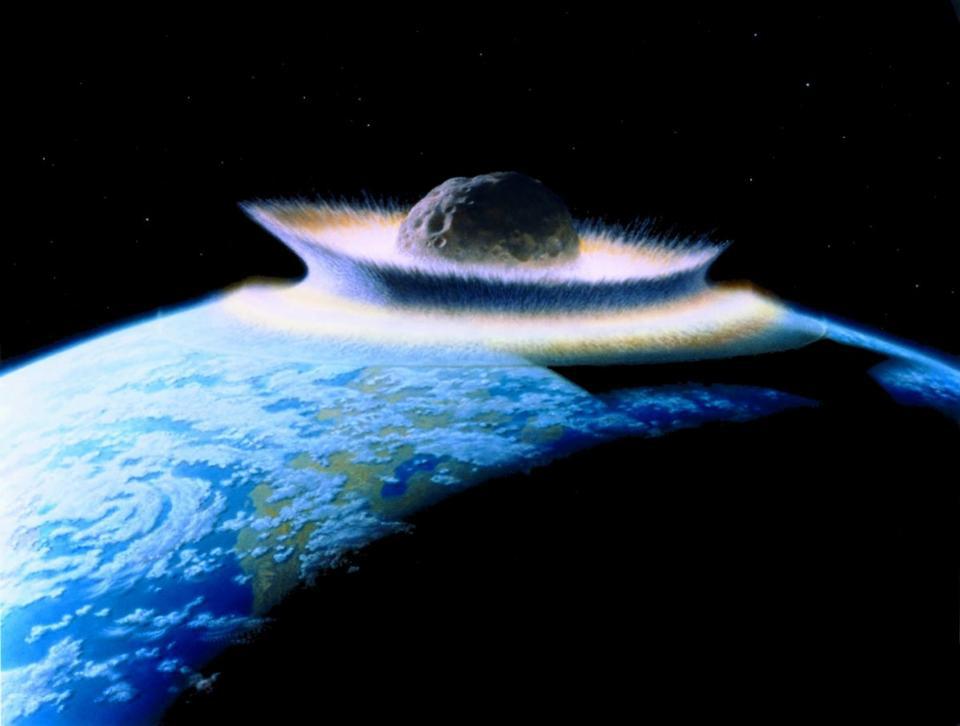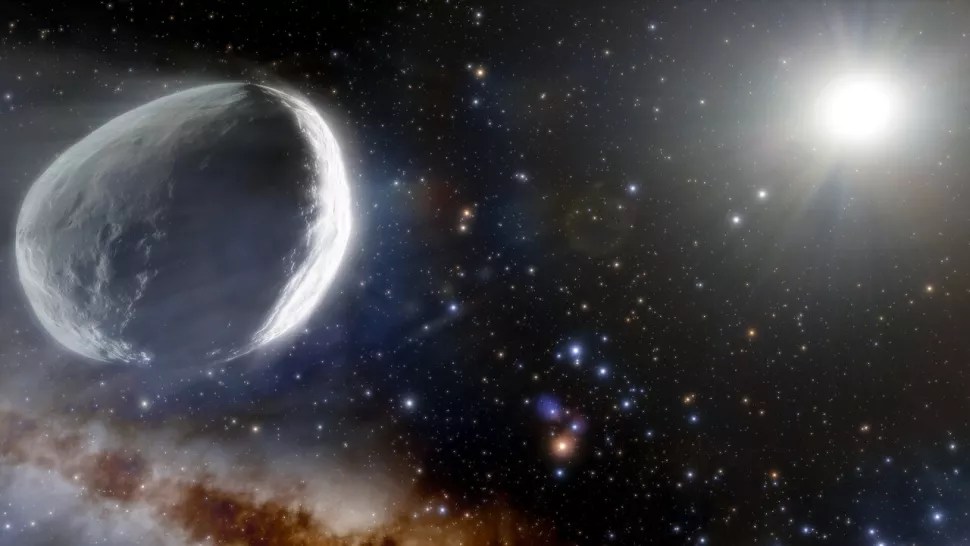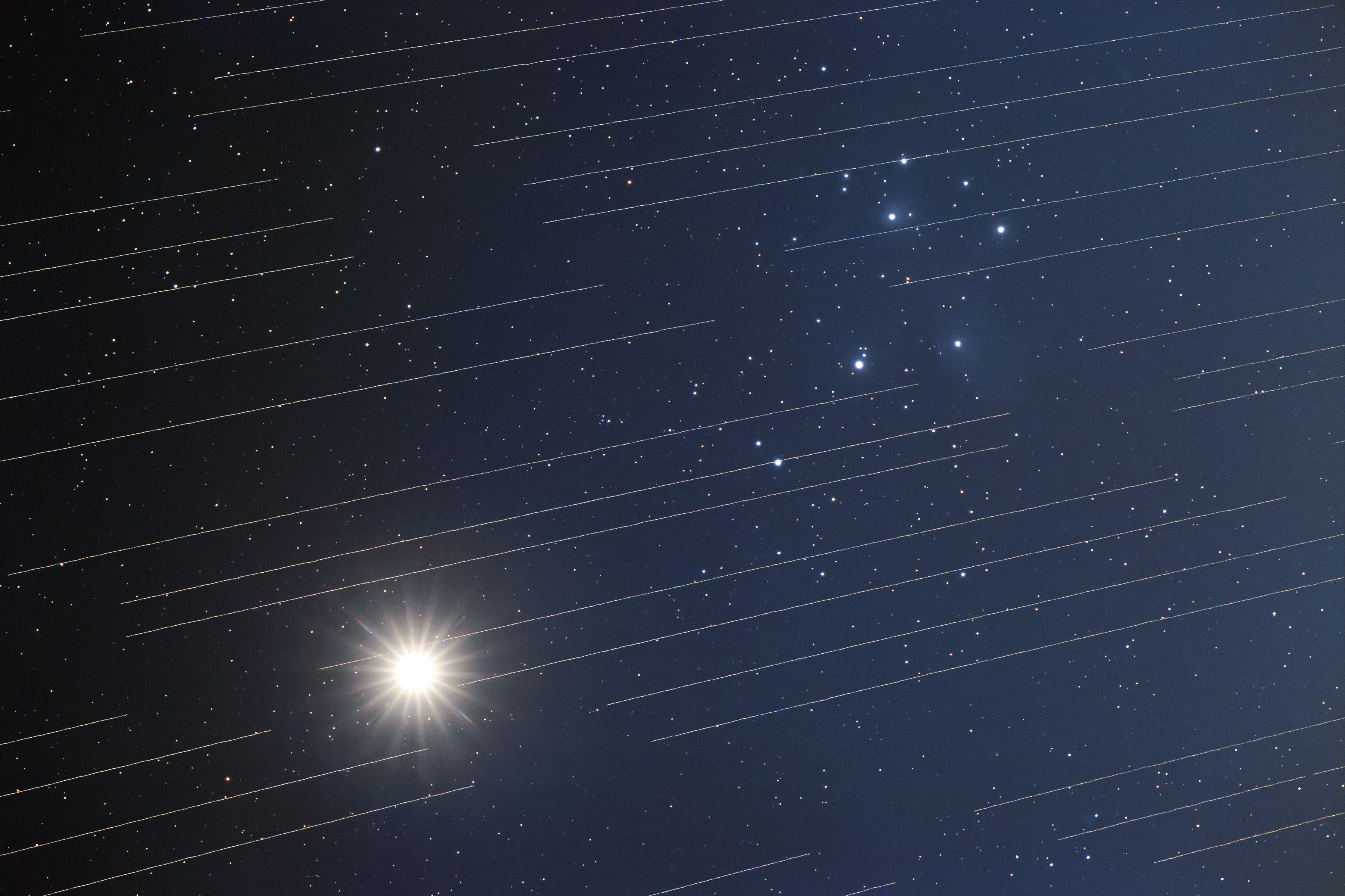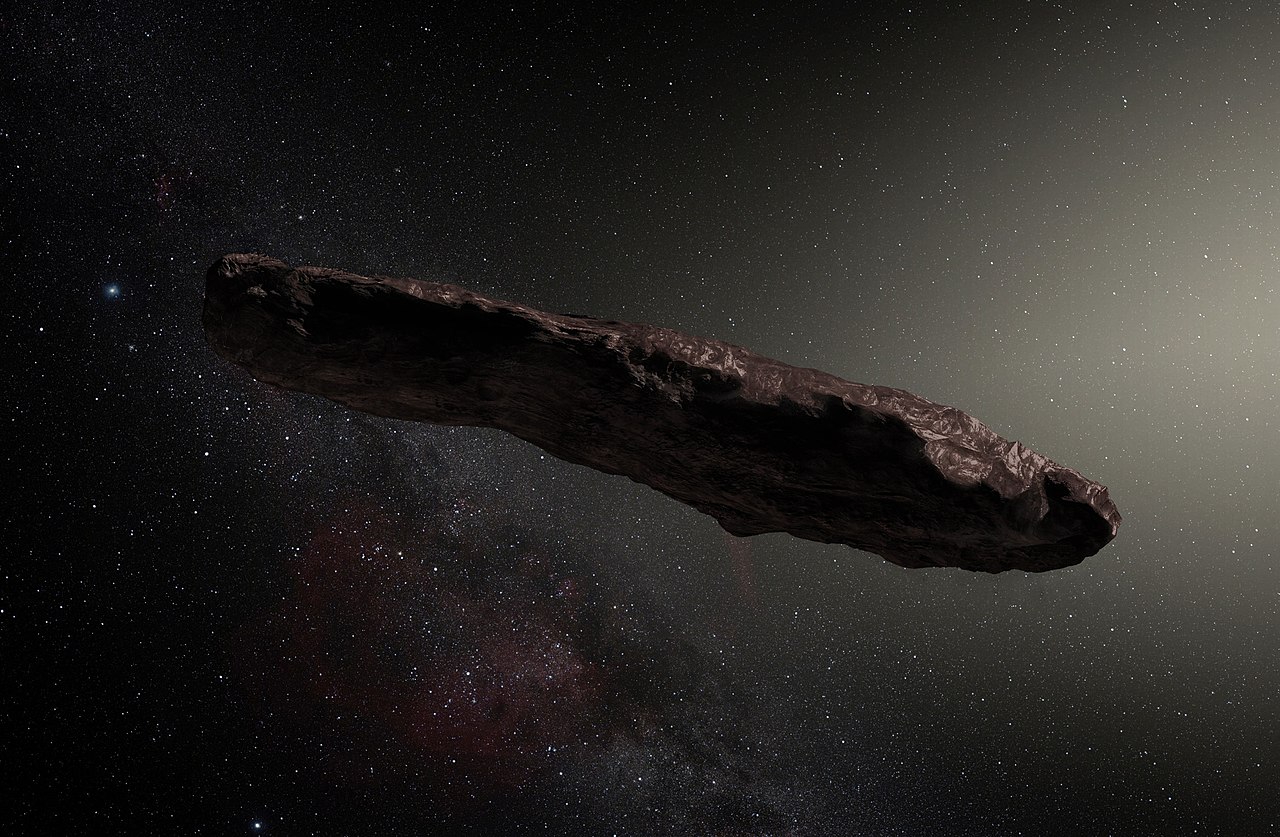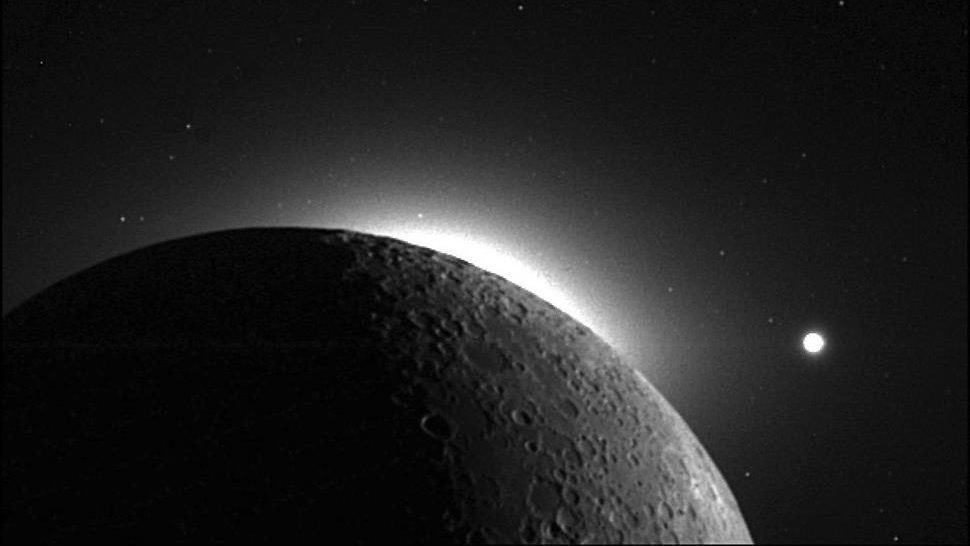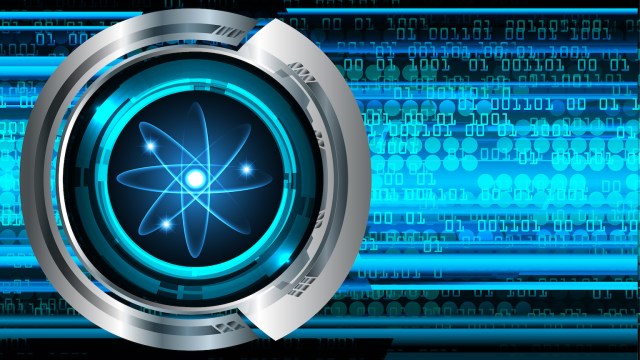Meet the one NASA mission that could save us from extinction
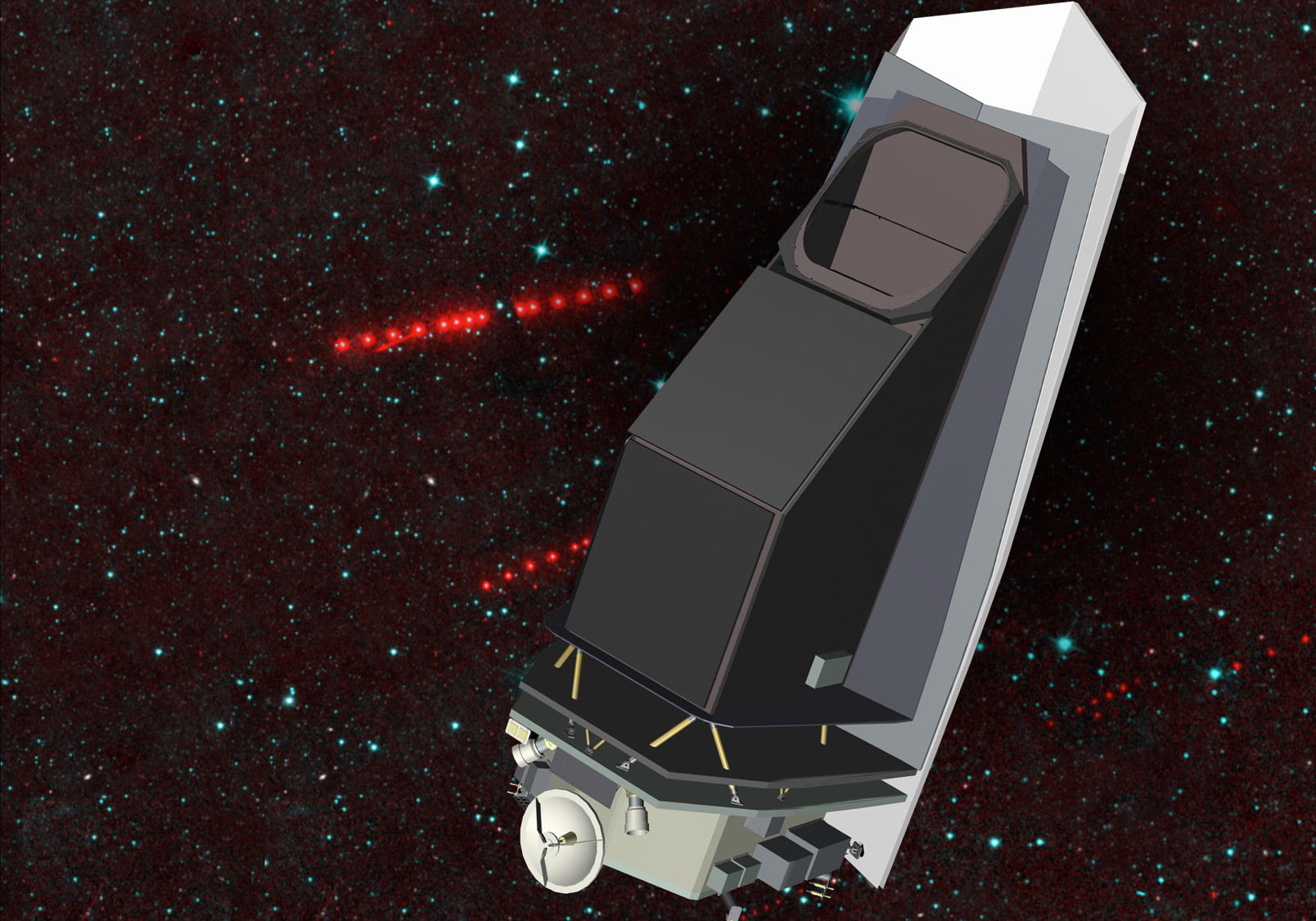
- With the advent of satellite megaconstellations, finding and tracking potentially hazardous asteroids is an increasingly difficult task.
- Additionally, most of the asteroids that we are finding and tracking aren’t the most dangerous or ubiquitous ones.
- The proposed NEO Surveyor mission, just ranked as a highest-priority mission, could be the one that saves us, but only if we fully fund it.
In all the world, there are few things more immediately dangerous to humanity than the potential for a large, massive object, like an asteroid or a comet, to collide with our planet. While our imaginations might immediately go to the devastating event 65 million years ago that led to our planet’s most recent mass extinction, the unsettling truth is that similar, smaller, but only slightly-less-catastrophic planetary strikes happen far more frequently. Unless we know what’s out there and can quantify the danger that this population of objects pose to us, we’re simply betting our continued existence on pure luck.
The only way to remedy the situation is to look out at the greater Solar System and determine what objects are out there and what their orbits are, alerting us to any potential near-or-medium-term risks that may require a planet-saving intervention. Unfortunately, practically all of the leading efforts towards planetary protection to date have been ground-based, which is not only an extremely limiting approach to the problem, but one that’s already gotten much less efficient and effective with the recent onslaught of satellite megaconstellations polluting our night sky.
One mission, however — NASA’s NEO Surveyor — has the potential to find and characterize the majority of yet-undiscovered objects that pose a hazard to Earth. Unless we want to continue to bet the entire planet’s survival on pure luck, everything depends on us choosing to fund this mission.

Here in our Solar System, we typically think of its structure as follows:
- the Sun sits at the center,
- orbited by the four inner, rocky planets,
- where a large, massive belt of thousands of asteroids sits out beyond the orbit of Mars,
- with the giant planets, Jupiter through Neptune, orbiting beyond the asteroids,
- and then, out beyond Neptune, lies the Kuiper belt and then the Oort cloud, the primary sources of the comets that occasionally pass through the Solar System.
This picture isn’t wrong, but it isn’t quite complete. These components certainly exist, but even more appear when we look at our cosmic backyard in even greater detail. In reality, there are small, icy-and-rocky bodies that orbit between the asteroid and Kuiper belts — the centaurs of the Solar System — as well as a number of asteroids that have left the asteroid belt entirely, now orbiting the Sun along with the inner planets. Of this latter population of objects, a significant number of them come within about 5 million miles (8 million kilometers) of Earth’s orbits, and these collectively are the potentially hazardous asteroids we’re so worried about.
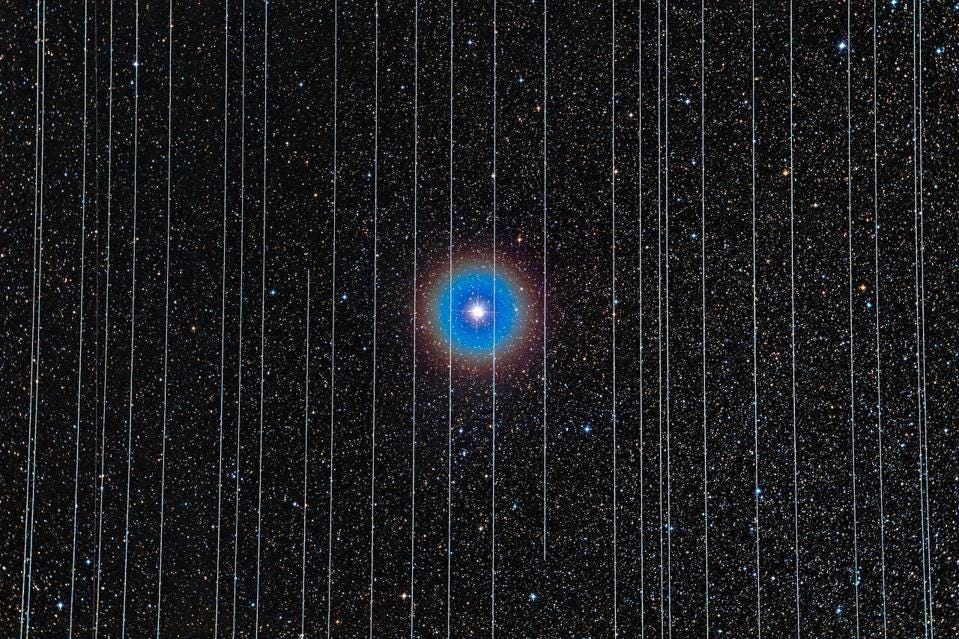
While it’s true that we’ve found many of these objects, the unfortunate reality is that we know we still have yet to identify the overwhelming majority of them. There are three main reasons why this is the case.
- Asteroids tend to be small, faint, and fast-moving relative to Earth. Unless your telescope is capable of imaging the same asteroid many times over a multi-week timespan — which most of our asteroid-identifying telescopes, such as Pan-STARRS, are incapable of for most asteroids due to their small size — we won’t have enough data to determine its orbit, and hence even though we might know it exists, we cannot hope to find it again.
- Most of the ground-based efforts to find these objects, which encompasses almost all of our planetary defense efforts to date, now have to contend with an extraordinarily large (and growing) number of confounding factors: the growing set of megaconstellations of satellites. The Large Synoptic Survey Telescope at the Vera Rubin Observatory should have been a tremendous upgrade to our planetary defense efforts, but given the recent advent of thousands of bright new satellites in low-Earth orbit, a new form of light pollution is plaguing these key observations, particularly during the hours surrounding dusk and dawn: the best time for finding these near-Earth asteroids.
- But even beyond the technical limitations of ground-based astronomy, there’s the problem that asteroids fall into different groups based on their orbits: Amors, which orbit exterior to Earth, Apollos, which mostly orbit exterior to Earth but do cross our planet’s orbit, Atens, which cross Earth’s orbit but spend most of their time interior to it, and Atiras, which fully orbit interior to Earth. Ground-based observatories are good at finding Amors and are somewhat good at finding Apollos, but are lousy at finding Atens and even worse at finding Atiras.
If we want to find and characterize most of the potentially hazardous asteroids out there, we need to do it from space.

Since it was first proposed back in 2006, this has been the major science goal of NASA’s NEO Surveyor mission. The mission would put a wide-field infrared space telescope into orbit, where it would have only one major science goal: to identify and determine the orbits of every potentially hazardous asteroid close to Earth. For a cost of just over half-a-billion dollars, we could:
- identify practically every asteroid over 140 meters in size that poses a danger to Earth,
- of all four types of asteroids, especially the otherwise-hard-to-get Atens and Atiras,
- determine their initial orbits and then, with a ~2 week follow-up, further constrain them so they can be imaged with ground-based follow-up observations,
- which will then allow us to calculate their long-term orbits, quantifying their danger to Earth,
- and do the same thing for a large number of asteroids (but not all of them) under 140 meters, allowing us to estimate the population distribution of smaller objects as well.
This would represent a tremendous leap forward in planetary protection, and one that’s long overdue. For those of you who’ve never heard of NEO Surveyor and don’t understand why it’s vital, let’s take a look at why this matters.
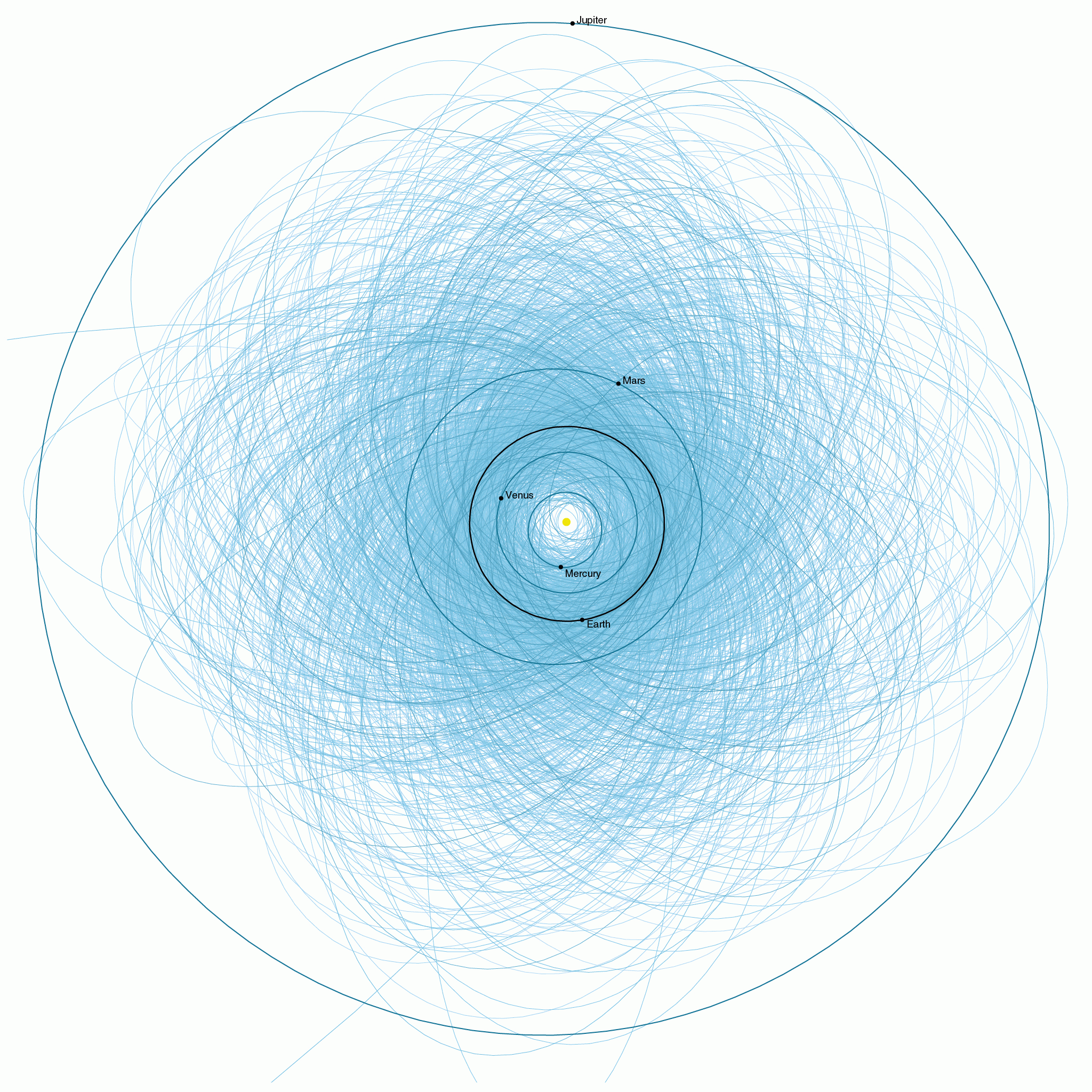
There have been two main ways we’ve discovered the potentially hazardous asteroid orbiting Earth to date. One has been through the use of ground-based surveys, and in particular through large-area or even all-sky surveys that examine as much of the sky as they can over and over again. If there’s an object that changes in its properties at all — in either brightness or position or both — these surveys will detect whatever differences arise from one moment to the next.
Telescopes that specialize in this, such as Pan-STARRS and the Catalina Sky Survey, have been outstanding at finding objects within our Solar System, including many comets and asteroids. Although many of those asteroids have turned out to be potentially hazardous to Earth, these telescopes are severely limited by the faintness of the objects they can observe. Even though they’re substantial in size, they observe each area of sky for a short period of time, which means they can only identify the largest and/or closest objects. This has led to thousands upon thousands of discoveries, but many large bodies capable of causing catastrophic devastation to Earth remain undiscovered.
Additionally, because they only observe Earth’s “night” side, they’re largely incapable of finding objects that orbit interior to our planet’s orbit around the Sun. The Atens and Atiras remain largely undiscovered from ground-based efforts.
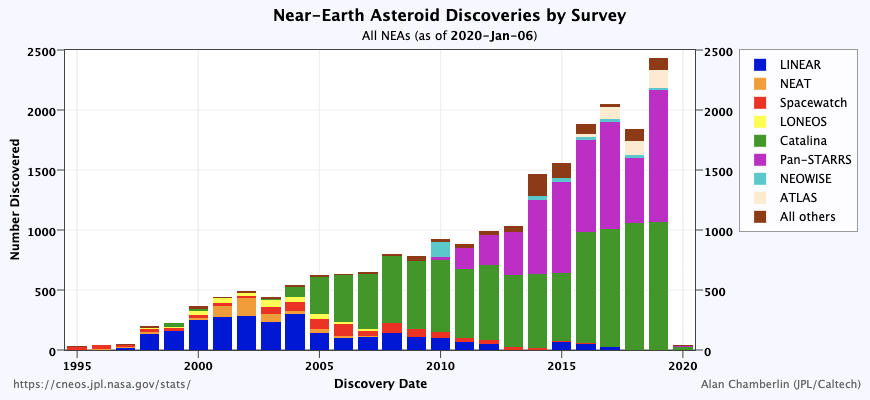
The other main way we’ve found potentially hazardous asteroids has been through survey telescopes in space, such as NASA’s WISE mission. (And, later, the NEOWISE mission, which uses the same telescope as WISE, but repurposed for planetary defense.) By observing the entire sky in the infrared from space, WISE can overcome two major obstacles that ground-based telescopes suffer from.
- Most asteroids are relatively black, intrinsically, in color. As they reflect only a tiny amount of sunlight, they’re incredibly difficult to see in optical wavelengths. By observing in the infrared — and in particular at wavelengths that are too long to be viewed from the ground — a space-based infrared observatory can find any asteroid that’s close enough to us to be warmed by the Sun.
- The greatest hazard to Earth comes from asteroids that cross Earth’s orbit more frequently, which are the ones that spend most of their time interior to Earth’s orbit. Unfortunately, that means they spend most of their time on the “day” side of Earth, where they’re invisible to ground-based telescopes. By going to space, we can at last find them.
While this approach sounds like it’s a great one, there’s a severe limitation. Almost all of the asteroids are in a narrow region of the sky: near the ecliptic plane and interior to Earth’s orbit, which means that missions like WISE have spent precious little of their time actually observing this region of interest.
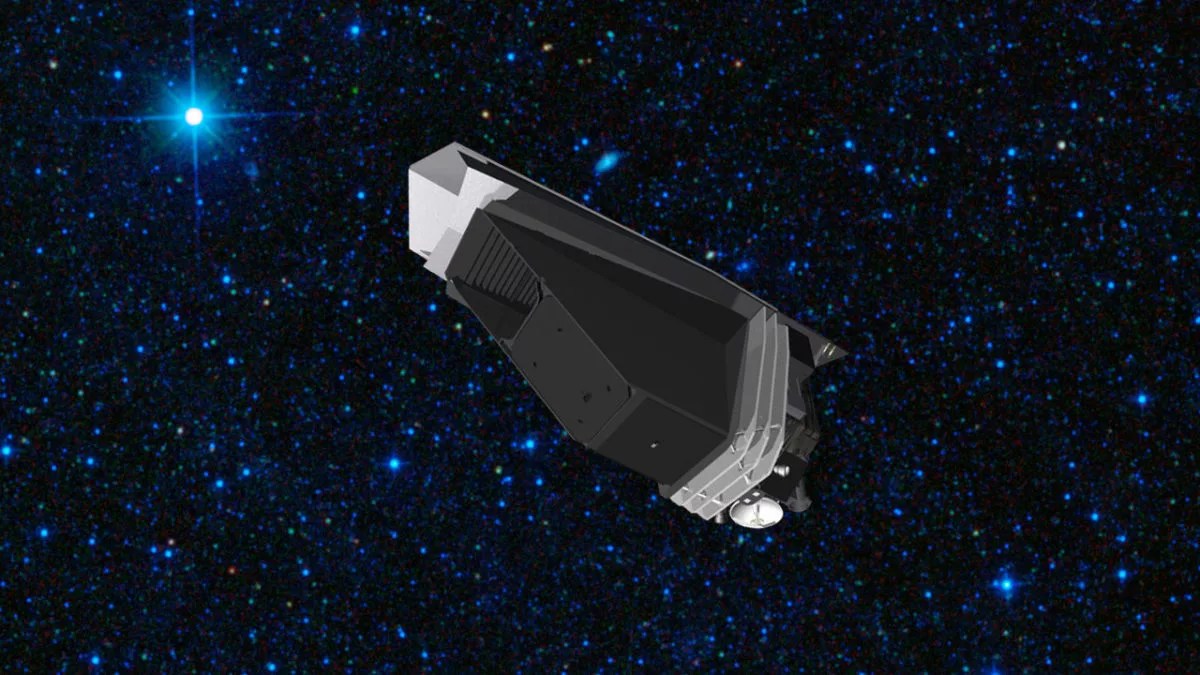
That’s where the power of what NEO Surveyor is proposing to do comes in. Instead of planetary protection being one of many science goals for an all-purpose observatory like WISE, the only science goal of NEO Surveyor is to find these potentially hazardous asteroids. Whereas other missions have had to trade-off between cost and aperture (i.e., the size of the primary mirror), there’s a clear choice to be made when it comes to planetary protection: to find practically all of the objects that are large enough to cause regional devastation or greater. That corresponds to asteroids greater than about 140 meters across.
It will miss most of the city-killer asteroids that are out there, like the one that caused the famous Barrington Crater in Arizona some ~50,000 years ago. Even though such an impact could kill millions if it struck in the wrong location, the object that created it was only ~50 meters across, meaning we’d need a telescope with roughly nine times the light-gathering power (and at least triple the cost) as the ~0.5 meter (and $0.5-0.6B budget) NEO Surveyor to find all of those. Yes, it’s still a trade-off, but it’s guaranteed to take the first step in protecting our planet against catastrophe. Smaller objects will still mean bad news, but won’t pose a threat to civilization or even the world economy as a whole.

The way this telescope works is to view approximately 11.6 square degrees of the sky at once in two infrared wavelengths. The telescope will be passively cooled to about ~30 K, and will not require active cooling, as it will instead make use of a sunshade. It will be located at the L1 Lagrange point, between the Earth and the Sun, and will largely observe the region away from the Sun in the plane of Earth’s orbit: containing the largest density of potentially hazardous asteroids in both the prograde and retrograde directions. Although it is expected to produce ~80+ Gigabits of data per day, its orbit will allow for fast downlink speeds, so that the entirety of the data that the telescope takes will be returned for scientific analysis in a lossless fashion.
In addition, the “140 meter and larger” threshold is simply the threshold where practically all of the potentially hazardous asteroids will be revealed. Below that threshold, however, the mission is also expected to reveal tens of thousands of smaller near-Earth objects, with sizes ranging from ~30 meters (~100 feet) and up. The capabilities of NEO Surveyor will, for the first time, enable us to know what the size vs. number distribution of near-Earth asteroids are, setting us up to make better plans for the future for protecting planet Earth.

The way that these objects will be discovered is fascinating. By looking in the infrared, even relatively cool, small objects that are close enough to Earth will be seen and discovered. With just a few observations over even a short timespan, we can reconstruct the orbits of these objects well-enough to know where they’ll be a few weeks from the time of observation.
This is where NEO Surveyor’s orbit, at the L1 Lagrange point, is the key difference-maker over both ground-based telescopes and telescopes in low-Earth orbit like WISE/NEOWISE. From its perch in space, it will be able to observe that same object again about two weeks after the original discovery, which allows for a much longer-period determination of its orbit.
With a two week time interval separating successive observations, we can then deduce where each newly discovered object will be over the next 18-to-24 months. That’s plenty of time for follow-up ground-based observation to occur, and which will enable us to calculate the impact probability and what scientists call the MOID (Minimum Orbit Intersection Distance) of each object. This combination, of not just object-finding but of orbital characterization and the quantification of an object’s hazardousness to Earth, is what sets NEO Surveyor apart from all prior planetary protection efforts.

As released in the Spring of 2022, the decadal survey for NASA’s Planetary Science division recommended that NEO Surveyor be funded and flown as a highest-priority mission for planetary defense within the field of planetary science. And yet, as of today (in May of 2022), the necessary funds to support this mission have not been set aside. Unless the funds for this all-important mission materialize — a political decision well out of the hands of the scientists who are leading the effort — there’s a very large risk that we’ll remain ignorant of the most hazardous objects that are out there, posing a threat to planet Earth.
As long as we don’t know what’s out there, we can’t know what poses a danger to us. As long as we don’t know what’s coming our way, we’re unable to responsibly prepare for how to defend against it. And without that preparation, to be frank, we’re simply sitting ducks for whatever the Universe throws at us.
These objects are out there, in Earth-crossing orbits. If we don’t find them, then we’re simply at the mercy of when they find us. We have the tools and technical capabilities to protect ourselves from whatever the Universe throws at us. But unless we make the choice, as a civilization, to invest in planetary protection, we won’t even know what’s coming for us until the damage is already done.
The author thanks Dr. Amy Mainzer, principal investigator of NEO surveyor, for invaluable discussions.
